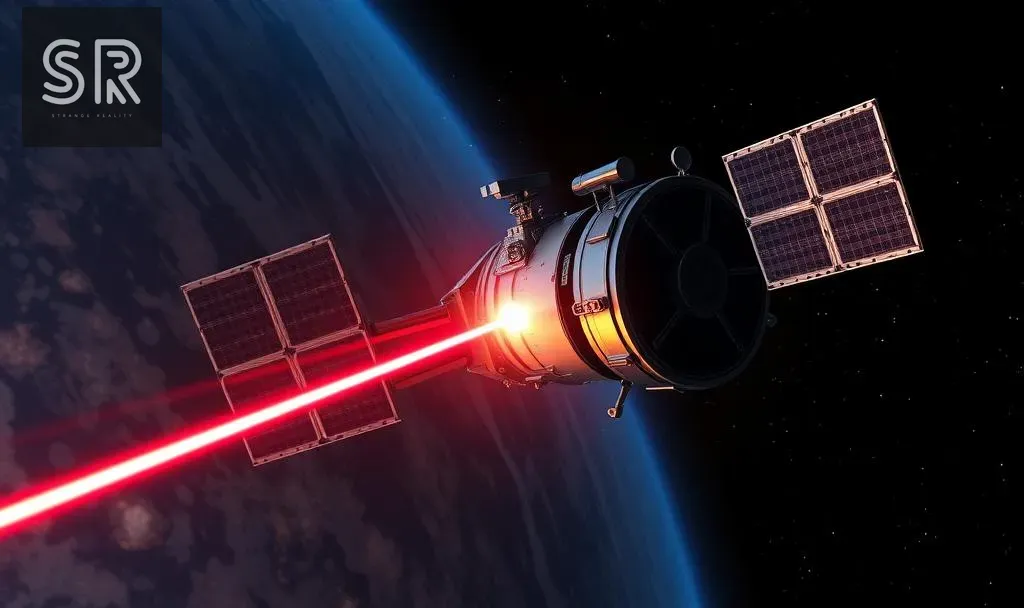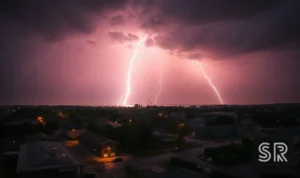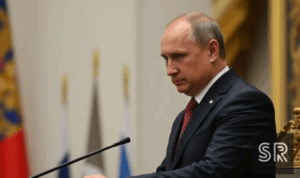Russia “Blindfolded” Satellites in Space, Escalates Hybrid Warfare
What we’re witnessing is a hybridization of terrestrial and orbital combat. Russia is proving that …
Russia Escalates Hybrid Warfare: Satellites “Blindfolded” in Space as Moscow Gains Ground in Ukraine
As the war in Ukraine enters another brutal phase, with Russian forces intensifying air and artillery bombardments across several Ukrainian cities, a new, shadowy front appears to be emerging—not on the ground, but in space.
According to a mix of Russian defense communiqués and corroborated insights from Western intelligence sources, Russia has begun deploying advanced anti-satellite (ASAT) and electronic warfare systems designed to degrade or disable Western satellite surveillance and communications over the battlefield. The move marks a significant technological escalation in the conflict.
🔥 Escalating Ground War, Mounting Civilian Toll
On the battlefield, Russian military operations have grown more aggressive, with multiple Ukrainian cities pounded by long-range missiles, glide bombs, and cluster munitions in recent days. Ukrainian force casualty reports indicate an alarming uptick in military losses, especially in regions like Kharkiv, Dnipro, and parts of Donetsk. Russian armored units, backed by air support and electronic jamming systems, are reportedly making incremental territorial gains.
🛰️ Turning Off the Eyes in the Sky: Russia Targets Western Satellites
In response to what it views as increasingly direct NATO and U.S. support for Ukraine’s battlefield command—including real-time satellite imagery, SIGINT (signals intelligence), and drone guidance—Moscow has “upped the stakes.”
Russia has deployed interceptor satellites and ASAT capabilities to erode NATO’s space-based surveillance advantage over Ukraine. Russia has developed methods to jam or obscure Western satellite imagery, rendering systems like Maxar satellites—used for tracking Russian forces and guiding Ukrainian strikes—ineffective in certain regions. Ukraine also lost access to Maxar satellite imagery due to a satellite strike, highlighting vulnerabilities in Western intelligence infrastructure.
A Western intelligence officer, speaking on condition of anonymity, confirmed that several NATO-aligned satellites have experienced unexplained “blackout” zones and data disruptions in recent weeks, particularly over eastern Ukraine and parts of the Black Sea. While initially thought to be technical anomalies, newer analysis strongly suggests intentional Russian interference.
Moscow new suite of space-based jamming and laser-dazzling technologies capable of blinding or misdirecting certain types of surveillance satellites—including those capable of guiding advanced Western weapons like the UK-French Storm Shadow cruise missiles and long-range UAVs (unmanned aerial vehicles).
Western satellites are critical for providing real-time data on Russian troop movements, missile launches, and battlefield dynamics. By disrupting these capabilities, Russia aims to conceal its military operations, hinder Ukraine’s ability to preempt attacks, and reduce the effectiveness of Western-supplied drones and missiles. The Center for Strategic and International Studies (CSIS) notes that Ukraine’s successful drone strikes, such as Operation Spider’s Web on June 1, 2025, may have prompted Russia to prioritize satellite disruption to prevent further attacks.
🎯 Why This Move Matters: Tactical and Psychological Impacts
By temporarily shutting down or distorting enemy satellite feeds, Russian forces aim to limit Ukraine’s situational awareness—especially during key operational phases, such as troop movements, taking-off of fighter jets or artillery positioning. In effect, this prevents Ukrainian commanders from gaining advance warning of incoming strikes or troop surges, allowing Russian units to regain tactical surprise.
More worryingly for NATO, several of the satellites impacted are dual-purpose, meaning they serve both military and civilian functions. Some of these systems assist with precision navigation, weather data, and communication relays for both Ukrainian and NATO units.
A U.S. Space Force analyst, in a closed-door briefing, reportedly warned that Russia’s space warfare capability is now “far more advanced and precise” than previously assessed, potentially surpassing China in certain jamming and counter-satellite techniques.
Dr. Elena Petrova, a former Russian defense consultant now based in Vienna, observed:
“What we’re witnessing is a hybridization of terrestrial and orbital combat. Russia is proving that you don’t need to destroy satellites to win—you just need to make them blind when it matters most.”
This marks a significant shift in global military strategy. Future conflicts may increasingly hinge on control of the electromagnetic spectrum and the ability to deny adversaries access to critical space-based infrastructure.
🛡️ The Response: NATO Scrambles to Shield Satellite Assets
In light of these developments, Western powers are rapidly reassessing their satellite defense protocols, and scrambling for countermeasures including signal redundancy, hardened comms relays, and orbital maneuvering strategies. However, experts warn that this could mark a new phase of hybrid warfare—one where space becomes an active battleground, and the line between cyber, electronic, and kinetic warfare continues to blur.
Russia’s satellite tactics are a direct response to the “Coalition of the Willing’s” intelligence-sharing efforts, which must have enabled Ukraine to conduct deep strikes inside Russian territory, including attacks on airbases and oil refineries. The loss of real-time intelligence could force Ukraine to rely more heavily on ground-based reconnaissance and less precise targeting, potentially increasing civilian casualties and reducing the effectiveness of its counteroffensives.
🧭 Strategic Implications: Fog of War Returns
If Russia continues to interfere with space-based ISR (Intelligence, Surveillance, and Reconnaissance), Ukraine’s forces—highly dependent on Western satellite support for everything from artillery targeting to drone strikes—could find themselves increasingly operating “in the dark.”
This move also carries broader strategic consequences: it challenges Western technologies, raises the risk of escalation into space conflict.
🧩 Final Thought;
With real battles raging in Ukrainian trenches and invisible ones being waged in orbit, the Ukraine conflict has now fully entered the era of multi-domain warfare. Russia’s apparent success in “blindfolding” portions of the West’s satellite constellation not only impacts this war—but also sets the tone for how future global conflicts may be fought: across land, air, cyberspace, and now, the stars.
Thanks for reading and kindly subscribe.












Post Comment